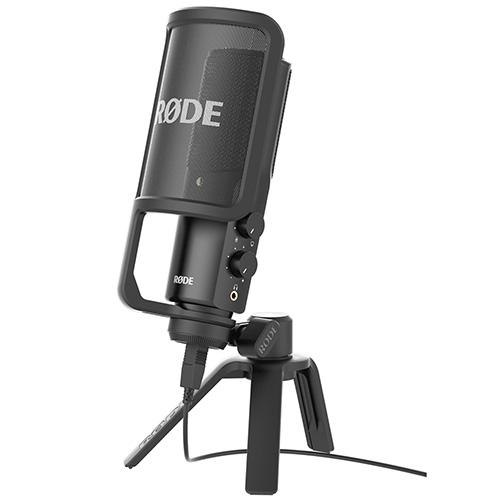

Your environment will change what kind of mic you need. This is an excellent option for anyone podcasting on the road in unpredictable settings and weather. These microphones don’t require any external power, so plug it in and get to rocking some sweet vocal tracks. These mics are a mainstay at live music venues. Condenserĭynamic microphones are durable, moisture-resistant, resilient mics that capture loud sounds. The Zoom H6 is an older recorder model from Zoom however, if you want a more significant, newer recorder offering from the powerhouse audio company, check out the Zoom H8. If you have a USB microphone, plug it in and get started. Many microphones now offer both USB and XLR outputs already built-in. USB output microphones are increasingly popular since they’re user-friendly and require less gear to record straight to editing software.
#Rode procaster vs podcaster software#
Then, upload to an editing software later if you need to keep the footprint smaller or do a podcast on the road. Instead, go straight for a recorder such as the Zoom H6, which has four XLR inputs with gain control.

You could also bypass using a computer in the recording stage altogether. These will have options to manipulate your signal’s gain (loudness), headphone monitoring levels, and audio outs to get the signal to your computer. This device is usually an audio interface or a mixer that changes the analog signal from your mic and transfers it to a digital one.

Since no home computer that I know of has XLR inputs, you’ll need a device to bridge the gap between the microphone and the computer. Higher-end gear, and most audio recording gear in general, will rely on this cable. The three pins are ground, a positive, and a negative terminal to relay electricity from one point to another. It’s been around for ages and will remain on sets for years to come. The three-pin XLR is the essential audio cable. Here’s a breakdown of all the essential gear you need to take the podcast idea you’ve been formulating and help turn it into a reality.īefore we dive into the sweet gear reviews below, let’s take time to do some rundowns on a few basic gear choices and audio elements for those who are brand new to sound recording. The bare essentials for a podcast breaks down to a computer outfitted with some audio editing software, a microphone, something to connect the two devices, and a space to record in. Starting a podcast? Here are some audio basics, studio setups, microphone reviews, and input for different styles of podcasts.


 0 kommentar(er)
0 kommentar(er)
